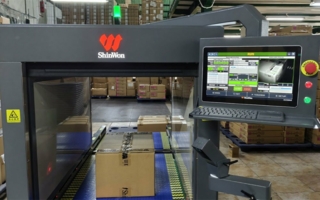10/11/2022 – Logistics — auf Deutsch lesen
Delivery chaos continues to decline
Importers of fast-moving consumer goods don’t need to be on high alert when it comes to mega retail events – at least in regards of sea freight rates and transit times.
The supply chain experts at Setlog, a software company based in New York City and Germany, do not expect delivery chaos or a sharp rise in ocean freight rates for containers from the Far East before well-known shopping events and in the run-up to Christmas. The main reason: Importers of consumer goods have learned from the Covid-19 pandemic and are now ordering their products on average one week earlier than they did in 2020 or before the pandemic. In addition, order volumes have fallen by up to 25% since the summer compared to the previous year. This can be seen in an analysis of Setlog customers and brands. Another finding: in the months from June to September, transit times shortened by up to seven days compared to the same period last year.
More capacity makes for a more relaxed delivery situation
However, retailers only have small reason to be happy about the situation: “The cause of the decrease of order volumes by up to a quarter is the companies’ fear that consumers will buy significantly less in stores or online by the end of the year in comparison to the previous year – due to the current political and economic climate,” emphasizes Ralf Duester, member of Setlog’s Board of Management. In addition to the lower order volumes, other reasons contribute to the fact that the delivery situation is significantly more relaxed than a year ago. Overall, there is more capacity at the moment. There are half a million more containers in circulation and depending on the route, the ships are hardly overbooked at all, compared to being four times overbooked a year ago. As a result, transit times of container ships from Asia are leveling off again at 35 to 38 days, depending on the route and loop.
According to Setlog, sea freight rates have eased considerably, and are now only a quarter of the peak values during Covid-19. Back then, companies had to shell out between $16,000 and $20,000 for a 40-foot container. Now, depending on the port of departure, route, and shipping company, they have to put less than $5,000 on the table. On the spot market, prices of $4,000 and less are now being offered, even if it is not always possible to return the container to an inland depot, which makes drayage costs more expensive.
Situation in Europe still difficult
However, this trend, which is welcome for importers in general, is currently being dampened by a particular misery for European companies: while business is running almost smoothly, for example in Shanghai, the world’s busiest port, ships are still jammed on the North Sea waiting to enter the port of Hamburg. Therefore, it can still be too late for very tightly calculated or delayed promotional goods, even if there is a general improvement of the current status. According to Setlog, delays of up to eight days are still to be expected in occasional cases. The situation is constantly improving, however US east coast-bound ships that call a North Sea port prior to their journey across the Atlantic might experience delays, too.
Shifts observed in Asia
In the pre-Christmas season, the results of many importers of fashion, toys, household articles and more are not only diminished by lower demand, but also by rising purchase prices. Depending on the product and country, Setlog registers price increases of between 8 and 15% – not considering the strong US dollar, as purchases in Asia are generally not made in Euros.
According to supply chain expert Duester, the increased prices for goods from the Far East do not lead to large-scale production volumes of T-shirts or household goods being relocated from Asia to Europe or the US. “Labor and production costs are still significantly higher here,” Duester said.
Nevertheless, he observes shifts in Asia. Some orders are placed in Vietnam or India instead of China. This can also be seen in freight rates and container demand. While ocean freight rates for 40 DC containers continue to fall in China – they are currently about half the price they were at the beginning of the year – price levels in India and Vietnam have stabilized over the past two months. In several ports – including Mundra, Nhava Sheva and Ho Chi Minh City, the demand for containers has increased significantly though.




